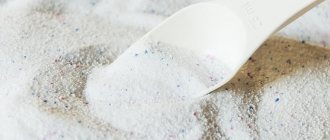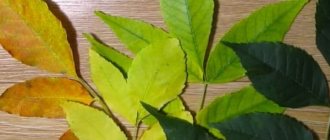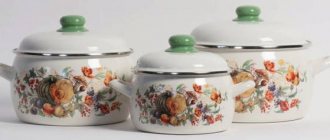Gardeners, both beginners and those with many years of experience, have heard a lot about watering indoor plants with tea. Mulching the soil with dry tea leaves can be an excellent alternative to organic fertilizers, however, the liquid form of fertilizer is considered more beneficial for plants. But fertilizer based on tea leaves is not suitable for all flowers.
Disputes about the benefits and harms of adding the product to the soil are still ongoing. Some believe that flowers and tea are a dubious union, while others claim that with its help it is possible to achieve amazing results. Find out everything about whether you can water indoor flowers with tea.
Composition and trace elements
Large leaf tea, both black and green, is best suited for fertilization.
Tea with flavorings can harm plants. It is also undesirable to use low-quality tea bags that have added dye.
Tea contains the following elements:
- Plants need potassium. With potassium deficiency, the leaves droop and acquire a bluish tint.
- Calcium affects leaf growth and root development.
- Magnesium is involved in photosynthesis. With its deficiency, the leaves turn yellow and fall off prematurely.
- Iron is necessary for photosynthesis. It serves as a cure for chlorosis, a disease in which leaves lose their green color.
Tea contains a small percentage of manganese, aluminum, sulfur, boron and other trace elements. Used tea leaves contain much less minerals than tea leaves. But even in this form, it has a beneficial effect on the soil, fulfilling the role of organic matter.
Benefits of tea leaves
The beneficial substances contained in tea contribute to the growth of green mass and also prolong flowering. These include:
- Potassium. Accelerates growth and budding process. There is no need to worry about an overdose of the substance, since the tea leaves contain it in moderate quantities.
- Manganese. Takes part in the process of photosynthesis and is responsible for the condition of the root system.
- Magnesium. A deficiency can lead to slower plant development, leaf fall and the appearance of various diseases.
- Calcium. This microelement acts as an important link that takes part in the process of protein and carbohydrate metabolism.
Housewives who grow flowers at home are confident that regular watering with tea leaves can serve as good feeding. However, do not forget that this method is applicable only to certain types of plants. Otherwise, you can achieve the opposite effect, which will lead to rotting of the root system and their further death.
Dry tea can be used to create drainage. With its help, the top layer of soil is mulched, which allows moisture to evaporate less intensively. In this way, you can reduce the frequency of watering indoor flowers.
This is interesting: welding helps reduce the aluminum content in the soil, while metal inhibits plant growth.
Are you here
Home → Watering → Is it possible to water flowers with tea and how to do it correctly?
Tue, 09/01/2018 – 12:37
| Comments:
4
| Author:
OLCHUKS
Many gardeners know about watering indoor plants with tea. Tea leaves are often used as an organic fertilizer, but much more useful substances are contained in liquid form, so watering with tea leaves is considered more useful. This method has many supporters and opponents. Some believe that such feeding will not bring much benefit, others believe that if used correctly, the effect will be amazing.
How does tea leaves affect soil and plants?
Conventional brewing methods, even repeated ones, cannot completely wash out all the substances that make them useful from the leaves of the tea bush.
They retain tannin compounds in large quantities, which are especially useful in gardening. At the same time, thoroughly dried raw materials can gradually release microelements into the soil or plant roots for a long time. Note! Only tea brewed without adding sugar, honey or spices can be used for such purposes. Otherwise, midges will appear in the ground, and the area will attract entire colonies of ants.
The effect of tea on plants
Infusion with tannins is useful, which:
- help the plant to form;
- make it more resistant to disease and cold;
- regulate the acid-base balance of the soil;
- become a prevention of root rotting.
Dry leaves contain:
- potassium;
- calcium;
- magnesium;
- iron.
Boron, aluminum, and manganese are found in small quantities. All of them contribute to the active formation and strengthening of roots, leaves, buds and inflorescences. As a result, the plant becomes stronger and produces a significantly larger harvest in the presence of other favorable factors. Large leaf tea, which is what is recommended to be used, when added to the soil will make it looser, lighter, softer, and will help natural ventilation, which is also very useful for most crops.
What plants to use for
Organic fertilizer in the form of tea leaves or compost made from them will have a good effect on vegetable crops, berry bushes, and aromatic herbs. All plants that need strong green shoots, active photosynthesis and the formation of a large number of fruit ovaries will respond positively to fertilizing.
The fertilizer is not used for root crops, crops that grow well in dense and heavy soil. Fertilizing is also not advisable for crops that can “grow fat,” that is, actively grow above-ground foliage and stems to the detriment of fruits or the underground part, which is harvested.
To improve the soil
Tea leaves as a top dressing are used for fertilizer, compost and drainage. Mulching retains moisture in the soil longer, so the plant does not need frequent watering.
The dried tea is added to the soil; after digging, the soil is replenished with useful substances. Many people also add wood ash at the same time, which suppresses excess acidity.
Drinking tea leaves as an organic fertilizer affects the soil:
- loosens heavy soil;
- neutralizes alkali;
- helps speed up compost processing;
- acts as mulch.
Used tea leaves not only enrich the soil with organic matter, but also improve the structure of the soil. A significant disadvantage is that a large volume of raw materials is needed in order to feel the desired effect.
Eggshell
Eggshells are known to consist of calcium, which is a fertilizer, although not as important as potassium, nitrogen, and phosphorus. If you grind it well, it will provide significant benefits in combination with mineral fertilizers.
The fact is that most of them increase the acidity of the soil, and the addition of shell powder neutralizes the acidity, which increases the effectiveness of fertilizers. Therefore, it is necessary to add fertilizers with ground shells. The effect of this is positive - the soil does not become acidic.
But you need to know that the shell decomposes slowly, and you can’t put too much of it.
. If you sprinkle shells in large quantities into the soil, this will not have the best effect on the development of seedlings of eggplants, tomatoes, peppers, and other seedlings. This fertilizer is only suitable for adult specimens.
What benefits can be found in pouring sleeping tea?
If you conduct a chemical analysis of tea, you can find mineral and organic substances in the drink, as well as tannins that acidify the soil. Not all indoor plants need such acidification. We can definitely say that ferns that suffer from the action of carbonate salts of soil and water, and cacti that love hard water and the tannins it contains, respond well to it.
This is interesting: Violets on a wick: what to make a cord from and how to transfer flowers to a wick
Other indoor plants react rather restrainedly to watering with tea leaves. At least, there is no reliable experimental data that would prove the obvious benefits of such fertilizer. There is an opinion that regularly mulching the soil with tea residues helps retain moisture in it, and if you apply tea leaves under indoor flowers and lightly dig it in a flower pot, the plants will receive fertilizer with an extended period of validity.
Disadvantages of the method
Opponents of such irrigation have a large number of arguments against the arguments of the other side. They deserve to be looked at in more detail.
- Modern floriculture has a sufficient selection of fertilizing and fertilizers, universal and specialized soils, adapted to the needs of all types of plants. It is possible to calculate the optimal level of nutrition that flowers require without adding additives of questionable composition.
- Flavored tea with additives can lead to sad consequences for flowers: rotting of roots, imbalance of soil nutrients.
- Watering tea leaves with added sugar leads to the appearance of fungus gnats, black midges and other pests in the pot, which are not easy to get rid of.
- When using moldy tea, you can introduce bacteria and mold fungi into the soil and cause soil contamination.
- For home greenhouse specimens that prefer acidic soil, such watering can only be harmful.
Advice
Soil acidification can be determined by such signs as a greenish coating on the soil that has an unpleasant odor, rotting of inflorescences and leaves, and mold on plant petioles.
These arguments will make supporters of “grandmother’s” methods think.
How to properly use tea leaves for watering and fertilizing?
This option may be acceptable for supporters of organic floriculture, since natural remedies have recently become widespread.
Advice
You can use any tea for watering: black, green, herbal. The main thing is that it does not contain additives or flavorings of synthetic origin.
How to properly water plants with tea infusion?
- Make sure your flowers need soil acidification. You can do a simple soil analysis using litmus paper.
- There is no need to constantly pour this fertilizer under the flowers, a few times a month is enough - time its application with the next watering.
- Do not water plants with tea with added sugar, or with sour or moldy solution.
- You can use a fresh, weak and unsweetened solution at room temperature.
Advice
If, in addition to watering, tea leaves are also poured under the flowers, its amount must be strictly dosed, mixing with the top layer of soil. This method will help retain moisture, which will allow you to water the plant less often.
Which ones cannot be irrigated?
There are plants that prefer an alkaline environment; for them, treatment with tea can be disastrous, for example:
- azalea,
- camellia,
- araucaria.
There are flowers adapted to neutral soil; watering with tea is possible, but rare. These types include:
- begonia,
- dieffenbachia,
- caladium,
- calathea and others.
There are special indicators to check the acidity of the soil; they are sold in gardening stores. Soil recommendations are easy to find for each individual plant species.
Methods of application
To make fertilizer, you can only collect loose leaf tea without additives or artificial flavors. The bags are not suitable for use in the garden or vegetable garden, since the leaves inside them are ground too finely and resemble more like ordinary dust, often with the addition of dyes. For any of the methods, the tea leaves must first be dried. It is better to dry in a dark place, since direct sunlight negatively affects the microelements contained in the leaves. High heat is not recommended.
In tablet form
The use of various ready-made tablets for seedlings has become a common practice for gardeners and gardeners.
It is possible to significantly accelerate the appearance of the first shoots, as well as simplify the application of fertilizers in the first weeks of cultivation. Instead of peat tablets, you can use tea tablets made with your own hands. Note! It is better to use tea with medium leaves or small fractions. Kenyan and Indian varieties are sold in this format.
There is no need to dry the tea too much, since you will need to add a little water to hold the mass together. For the tablets you will also need peat, coconut substrate in the proportions of 3:1:0.5, where 3 parts of tea. Mix everything thoroughly, pour in a little water until the mixture is slightly moistened. Line a small tea or coffee cup with cling film, place 3 tablespoons of the mixture inside, wrap, and press on a flat surface. You can plant the seedlings right away, or you can dry them, leaving the ends of the shell open, then store them and use them during the planting season.
Seed filler
Making your own filler for sowing seeds is more difficult than it might seem.
Excess of active fertilizers of any kind should be avoided. The seedlings will stretch out very quickly without forming the necessary support, which is undesirable. Tea is a good filler because the leaves release nutrients slowly and in small quantities. The leaves can be used in combination with peat and sand, with turf soil. The main soil should make up two-thirds of the total filler volume. Dry the tea first so that the soil does not become moldy and small midges do not appear in it.
Tea compost
Making complete tea compost is difficult.
Firstly, you will need a lot of brewed tea. Secondly, due to tannins, the mass will rot very slowly, it will dry out more quickly. Constant moisture will be required, which can lead to the appearance of insects and parasites. The smell from such homemade compost will be pungent, so it is better not to store the container with tea in a house or apartment. The best option for using tea leaves is to add tea leaves to regular classic compost up to a volume of about 20 percent of the total mass. The leaves, by releasing their enzymes, will significantly accelerate the decomposition of other organic components, so the compost will be ready for use in much less time. You can apply this compost with tea according to the standard fertilization scheme.
Note! You can use both green and black tea for this purpose. Exotic varieties of blue, white, and yellow species will not spoil the overall mass, but they will not bring much benefit either.
This is interesting: Teasel - growing and caring for a pile cone in the garden in open ground
Using tea bags
Large and medium tea leaves are much more effective as fertilizer than tea bags. But inventive gardeners have learned to extract benefits from even used tea bags. The most interesting way to use them is as a unique alternative to peat tablets used for growing seedlings.
How it works? The top of the bag is opened, a layer of fertile soil is poured there and the seeds are sown. The bags are placed in dense rows in the container. Everything is irrigated from above with warm water and left until germination. When the seedlings reach the picking phase, they are transplanted into pots. Some of the plants are transplanted into open ground along with the bags, which gradually decompose in the ground.
Using tea leaves
The remaining tea in the teapot is placed on a sieve and dried, then placed in a storage container. If you wish, you can collect a considerable amount of this fertilizer over the winter, especially if your family likes to drink tea. In the spring, it can be used for various purposes - dug up with soil, added to compost, sprinkled under plants as fertilizer and mulch.
The easiest way to use tea leaves is to add them to a compost heap. The tannins contained in tea activate the decomposition process, causing the compost to rot faster.
Digging the soil together with drinking tea improves its structure, making it airy and moisture-permeable. It is recommended to add 0.5 kg of dry tea leaves per 1 m². Of course, it is impossible to collect the required amount of tea for the entire garden, but there will be enough supplies for a flower bed or a couple of vegetable beds.
Tea leaves promote better plant growth. It is not difficult to fertilize - you need to scatter dried, sleepy tea around the stem of the plant, mixing it with wood ash in the top layer of soil. During watering, the fertilizer will gradually release useful elements. When planting, dry tea leaves can be poured into the holes.
A good result is obtained by using sleeping tea as mulch, which will retain moisture and at the same time delay the germination of weeds. The top layer of soil under the mulch remains loose. To prevent such mulch from becoming moldy after rain or heavy watering, you need to loosen the top layer of soil.
Using tea leaves when planting carrots improves seed germination. You need to sprinkle the seeds sown in the furrows with a layer of dry tea leaves. The soil is not clogged, the carrots sprout smoothly and evenly. In garden conditions, the tea leaves quickly rot and serve as a quick supplement at an early stage of development.
Spilled tea
Sleeping tea is a cheap, natural soil amendment. Welding loosens it, and it allows air and moisture to pass through better. The used leaves are ideal for fertilizing open soil in the garden. They are added at any period of plant development. During watering, the foliage begins the process of decomposition and useful components are released from it. After harvesting, a plot of land is dug up along with the tea. It is recommended to add tea leaves in a proportion of 0.5 kg per 1 sq. m.
Dormant leaf mass is used when growing indoor flowers. It is placed instead of drainage to retain moisture. This way the vegetation will not dry out during the heating season or in the summer, being under the sun. In addition, the dried tea leaves during rotting will enrich the soil with useful microelements. Plants with fragile root systems respond especially well to this mixture: begonia, violet. For flowers grown indoors, soil should be mixed with fallen foliage at a ratio of 3:1.
Fertilizer
As a classic fertilizer, you can use either freshly brewed tea, not yet dry, or pre-dried tea, and even an infusion of such raw materials.
The first option is best suited for open ground. It is better to combine tea leaves with ash, which is added during planting or digging. When adding fresh tea leaves that are still wet, you can ignore the growth phase of the crop. At any time, you can add leaves to the soil and carefully dig them up. Fertilizer with dry tea leaves is suitable for indoor plants. They must be added in small quantities to the soil during transplantation.
It is better to put fertilizer directly into the holes in the spring, since quite a lot of tea will be needed. Half a kilogram per square meter is an average calculation for moderately alkaline soils. If the PH imbalance is obvious, the dosage should be increased to 0.7 kilograms per meter.
A nutritious infusion can be prepared as follows: pour 1 glass of dry tea leaves with 3 liters of boiling water. Leave until completely cool. It is advisable to use it within the first 24 hours. There is no need to dose this fertilizer; it can simply be used when watering instead of regular water. This is an excellent option when additional feeding is needed in the middle of the season. A small concentration of microelements will not harm even the weakest plants, but will strengthen them.
Preparation of mulch
The method is to cover the ground with used tea leaves. Mulching prevents weeds from germinating if its layer is at least 5 cm. The soil is protected from drying out in hot weather, and from freezing in cold weather. Winter plantings of crops in this case show excellent germination results. After all, after watering or rain, the mulch gradually releases its beneficial substances to the seeds. Unfortunately, it is impossible to collect a lot of tea leaves at home. It is enough for one or two beds.
This method is suitable for open ground because it is ventilated and warmed up by the sun. At home, when tea waste is added to pots, mold may form or midges may appear, which will likely lead to weakening of the seedlings. To use this type of mulching, it is necessary to evenly distribute the tea leaves over the earthen area where garden crops, fruits or shrubs will be grown.
When does it make sense to collect tea leaves?
Few people will collect and dry tea leaves and then bury them in the ground. But in some cases this activity makes sense. For example, if you work in a cafe and bring home large volumes every day. Then you can add 0.5 kg of waste per square meter.
When working in a tea packaging factory, you can take the leftovers home or buy them on the cheap. Fresh, uncooked leaves are much more valuable, so they are added to the soil in smaller quantities.
Did you like the article? Share with your friends:
Hello, dear readers! I am the creator of the Fertilizers.NET project. I am glad to see each of you on its pages. I hope the information from the article was useful. Always open to communication - comments, suggestions, what else you want to see on the site, and even criticism, you can write to me on VKontakte, Instagram or Facebook (round icons below). Peace and happiness to everyone!
How to fertilize indoor flowers with tea
Use tea for potted crops as a fertilizer with caution - tannins can acidify the soil in the pot. Some office workers are too lazy to throw away tea leaves and unload them directly into flower pots. If such actions do not harm outdoor plants, indoor flowers can be seriously damaged. A damp layer of mulch forms on top of the soil, which quickly becomes moldy, creating favorable conditions for the appearance of small soil midges and pathogenic microflora.
This is interesting: Bobovnik (Laburnum) - planting and care in open ground at a summer cottage
You should not water indoor flowers with sweet tea - sugar negatively affects the development of the root system.
It is better to use dried tea as an infusion for root feeding. It is recommended to pour 1 glass of dried tea leaves with three liters of boiling water and let it brew until it cools. Feed indoor flowers with this solution, using the same amount of liquid as with regular watering. Thus, the plants will receive the necessary nutrients.
The use of tea leaves as fertilizer only serves as an additional nutritional element for flowers and garden crops. In order to meet the nutritional needs of plants, the use of other agrochemicals is required.
Using tea bags
Large and medium tea leaves are much more effective as fertilizer than tea bags. But inventive gardeners have learned to extract benefits from even used tea bags. The most interesting way to use them is as a unique alternative to peat tablets used for growing seedlings.
How it works? The top of the bag is opened, a layer of fertile soil is poured there and the seeds are sown. The bags are placed in dense rows in the container. Everything is irrigated from above with warm water and left until germination. When the seedlings reach the picking phase, they are transplanted into pots. Some of the plants are transplanted into open ground along with the bags, which gradually decompose in the ground.
Tea and coffee in a flower pot - is it good for the plant?
Some gardeners pour the remains of drunk tea or add coffee grounds into a pot with a houseplant. Does it actually benefit the plants?
Tea and coffee are often used by gardeners as fertilizers, soil looseners and drainage. But at the same time, it is worth understanding that they can be not only beneficial, but also harmful.
Organic fertilizer made from tea and coffee
Spent tea leaves (tea leaves), weakly brewed tea or coffee grounds can make an excellent organic fertilizer. The remains of the tea leaves left in the cup after drinking tea can be safely poured into the soil of your home plants. Gradually rotting, the tea leaf will turn into high-quality leaf soil, which will enrich the substrate with organic substances, nitrogen and phosphorus. This benefits the plants: the leaves become rich green, growth accelerates, and the formation of buds increases.
Brewing tea as a top dressing
In addition to brewing, an excellent fertilizer is warm, weak tea , which you can water the plant with. Only it must be freshly brewed and without sugar. Such feeding can be done once a week.
Feeding with tea without sugar
Another homemade fertilizer is coffee grounds . It contains up to 2% nitrogen, as well as potassium, magnesium, and calcium. In terms of its nitrogen composition, coffee grounds are equivalent to mowed grass. Accordingly, it leads to accelerated growth of the plant that is fed in this way. Since coffee grounds slightly acidify the soil, coffee fertilizer is especially useful for roses, hibiscus, ferns, begonias, gardenias and other plants that prefer an acidic or slightly acidic substrate.
Tea brewing and coffee grounds as raising agents
Tea leaves and coffee residues can be used not only as fertilizing, but also as soil loosening agents. If they are added correctly, the substrate in the pot will become lighter and more breathable over time. Plant roots in such soil are abundantly saturated with moisture, nutrients and oxygen. Healthy roots lead to healthier plants as a whole. It is best to add tea leaves and coffee grounds during planting. It is enough to add a handful of baking powder per 1 liter of soil to get a loose and high-quality substrate.
Tea drainage
To improve the drainage of moisture from the pot, used tea bags are sometimes laid out in 1-2 layers on top of traditional drainage made of expanded clay or ceramic shards. Thanks to the beneficial substances contained in tea, this additional layer helps improve the quality of the soil.
Mistakes when using tea and coffee for plants
Despite all the positive qualities of tea and coffee, their improper use can harm the plant.
Mistake #1. Adding tea and coffee to the soil surface without loosening
In this case, mold and moss may appear on the top layer of the substrate. Often hordes of midges (fungus gnats) begin to hover over the pots, for which organic debris is an excellent nutrient medium. To avoid these troubles, the tea leaves and coffee grounds need to be dug into the ground at least 1-2 cm deep.
Loosening the soil in a pot
Mistake #2. Lack of soil moisture control
Many gardeners, having added tea leaves or coffee grounds to the soil, continue to water their plants according to the previous scheme. It is not right. Tea leaves and coffee absorb moisture and do not dry out for a long time. Frequent watering in this case leads to acidification of the soil and rotting of the roots of domestic flowers. Therefore, before watering plants with organic fertilizers such as tea and coffee, it is necessary to check the degree of soil moisture. Watering should be carried out only after the top layer of soil has dried by 1-2 cm.











